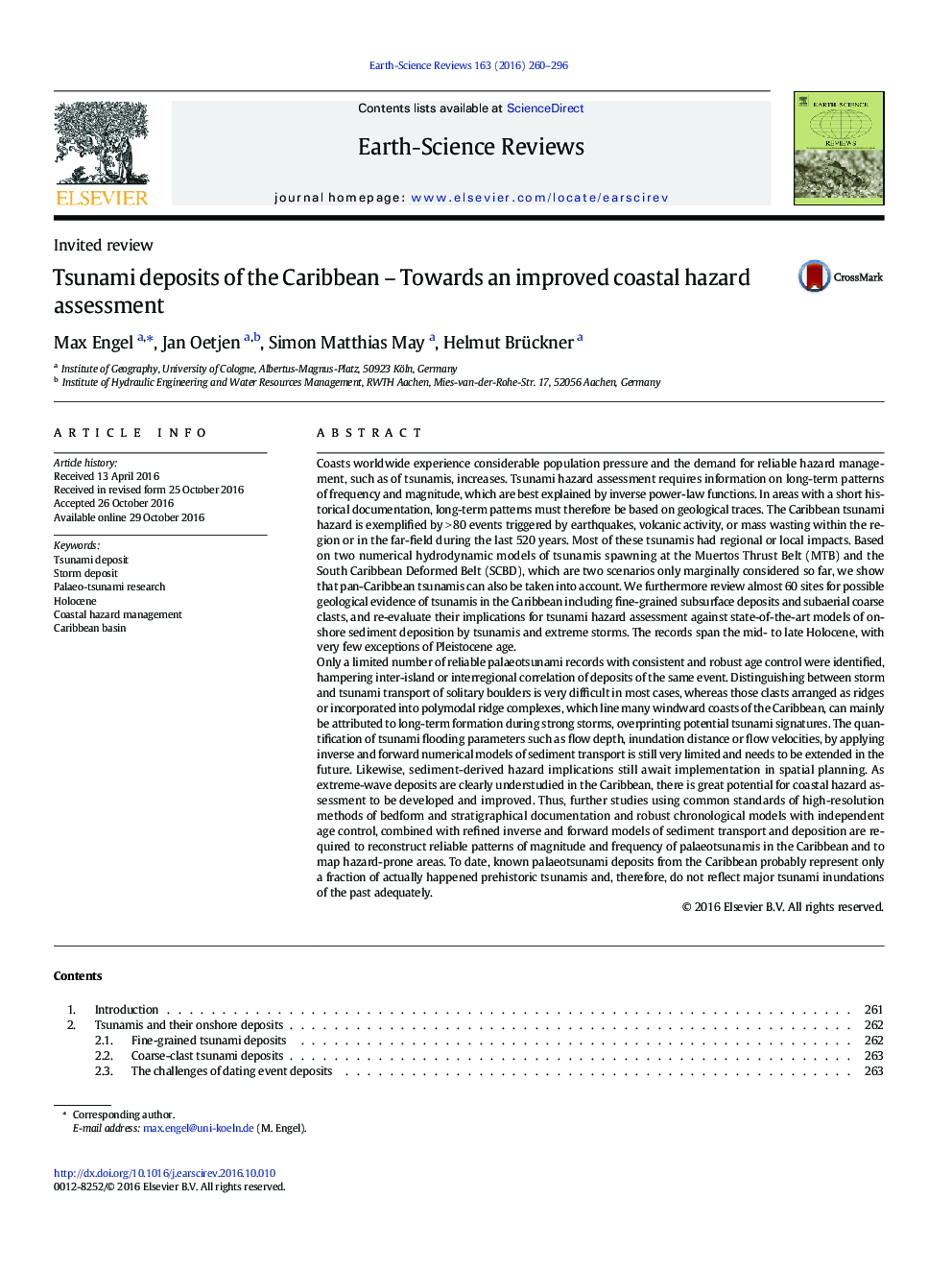| Article ID | Journal | Published Year | Pages | File Type |
|---|---|---|---|---|
| 6442751 | Earth-Science Reviews | 2016 | 37 Pages |
Abstract
Only a limited number of reliable palaeotsunami records with consistent and robust age control were identified, hampering inter-island or interregional correlation of deposits of the same event. Distinguishing between storm and tsunami transport of solitary boulders is very difficult in most cases, whereas those clasts arranged as ridges or incorporated into polymodal ridge complexes, which line many windward coasts of the Caribbean, can mainly be attributed to long-term formation during strong storms, overprinting potential tsunami signatures. The quantification of tsunami flooding parameters such as flow depth, inundation distance or flow velocities, by applying inverse and forward numerical models of sediment transport is still very limited and needs to be extended in the future. Likewise, sediment-derived hazard implications still await implementation in spatial planning. As extreme-wave deposits are clearly understudied in the Caribbean, there is great potential for coastal hazard assessment to be developed and improved. Thus, further studies using common standards of high-resolution methods of bedform and stratigraphical documentation and robust chronological models with independent age control, combined with refined inverse and forward models of sediment transport and deposition are required to reconstruct reliable patterns of magnitude and frequency of palaeotsunamis in the Caribbean and to map hazard-prone areas. To date, known palaeotsunami deposits from the Caribbean probably represent only a fraction of actually happened prehistoric tsunamis and, therefore, do not reflect major tsunami inundations of the past adequately.
Related Topics
Physical Sciences and Engineering
Earth and Planetary Sciences
Geology
Authors
Max Engel, Jan Oetjen, Simon Matthias May, Helmut Brückner,
